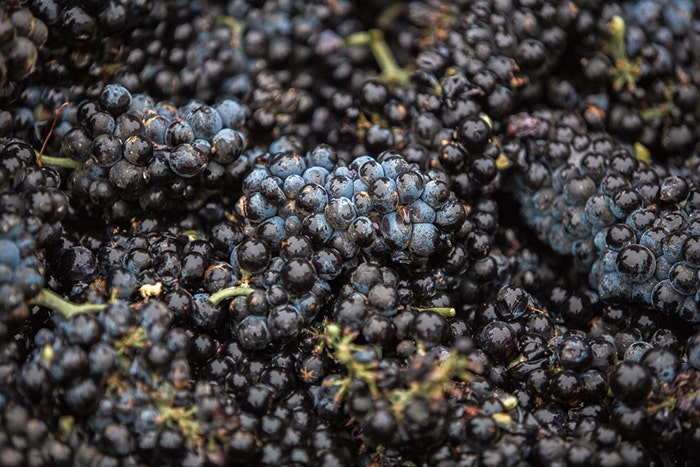There have been sporadic efforts to make sparkling wine in Santa Barbara County since the 1970s, with a few wineries bottling sparkling wine using North Coast grapes. But there was no sustained, focused program dedicated to grape-growing for sparkling wine production until 2005.
That’s when Norm Yost, winemaker at Flying Goat Cellars, created a sparkling wine called Goat Bubbles, which became an immediate hit. In addition to the original rosé release, Yost has since added more wines to the Goat Bubbles lineup including a Brut, Blanc de Blanc, Blanc de Noir and a fascinating sparkler made from Pinot Blanc.

A few years later, in 2008, Riverbench Vineyard & Winery in the Santa Maria Valley, north of Sta. Rita Hills, dipped its toes in the sparkling scene. With the help of Gerald Ployez, a native of Champagne who owns a winery and consulting business in Lake County, Riverbench dedicated a small amount of Chardonnay to sparkling wine production.
“It was really kind of experimental at that time as far as Santa Maria Valley fruit goes,” says Laura Booras, general manager of Riverbench, who has loved bubbles from a young age thanks to her father, Tim Booras, president of wine importer Freedom Beverage Company. “But we really, really liked those first two years of Chardonnay.”
“We’d love for people to drink bubbly on more than special occasions. You should be comfortable opening bubbly on a Tuesday night.” —Laura Booras
Nine vintages later, Riverbench is more invested than ever, with almost 20 percent of its 6,500-case production dedicated to five sparkling bottlings: blanc de blancs and blanc de noir, a rosé, a demi sec, and a reserve. Riverbench was the first in Santa Barbara to offer a full flight of sparkling wines in its tasting rooms.
“We’d love for people to drink bubbly on more than special occasions,” says Booras. “You should be comfortable opening bubbly on a Tuesday night.”
Rawley Hermreck, Riverbench’s vineyard manager, is also shifting viticultural practices for the sparkling-designated blocks. He’s adjusting nutrient additions and pruning earlier. It promotes steady, slow ripening for these grapes, which are harvested earlier than those for still wine production.
In August, Hermreck harvested Riverbench’s first crop of Pinot Meunier, one of the three most common grapes found in Champagne.
“It seems to be really thriving,” says Hermreck. “This first year fruit is absolutely gorgeous. I’m so excited to see how it turns out.”
More telling, as to how far Santa Barbara sparkling has come, is the new Central Coast Sparkling Wine Map. Featuring more than 70 producers, the map was created by Liz Dodder, who worked in digital marketing for Nestlé in Los Angeles before moving to Santa Barbara, where she consults with wineries.
“Sparkling is my favorite, and I always want to drink local,” says Dodder. “Local bubbles weren’t really on anyone’s radar.”
So she began compiling a list of producers for her blog, but instead devised the region’s first sparkling wine map. Dodder also included San Luis Obispo County.
Just north of Santa Barbara County, San Luis Obispo is home to Laetitia Winery, a pioneer in California sparkling. It was founded in 1982 and originally named Maison Deutz, by Champagne producer Deutz.
Despite Laetitia’s 35 years of sparkling wine success, only about 10 percent of San Luis Obispo County wineries, including the 200-plus operations in Paso Robles, produce a bubbly, according to Dodder. More than 30 percent of Santa Barbara County wineries produce sparklers, signified by the 45 entries on Dodder’s map.
“It just seems to be a labor of love down here,” says Dodder. “In Santa Barbara, it’s all about that art form of making wine and trying hard to create something really unique or elegant, regardless of whether it’s going to sell.”
“We have all different kinds: Sparkling Grenache at Casa Dumetz; sparkling Nebbiolo, Malvasia Bianca and Barbera at Palmina,” she continues. “People can do crazy things if they want, or people can have that very classic Champagne style at Riverbench.”
Editor’s Note: This article has been updated to correct information regarding Flying Goat Cellars.
Last Updated: May 4, 2023















